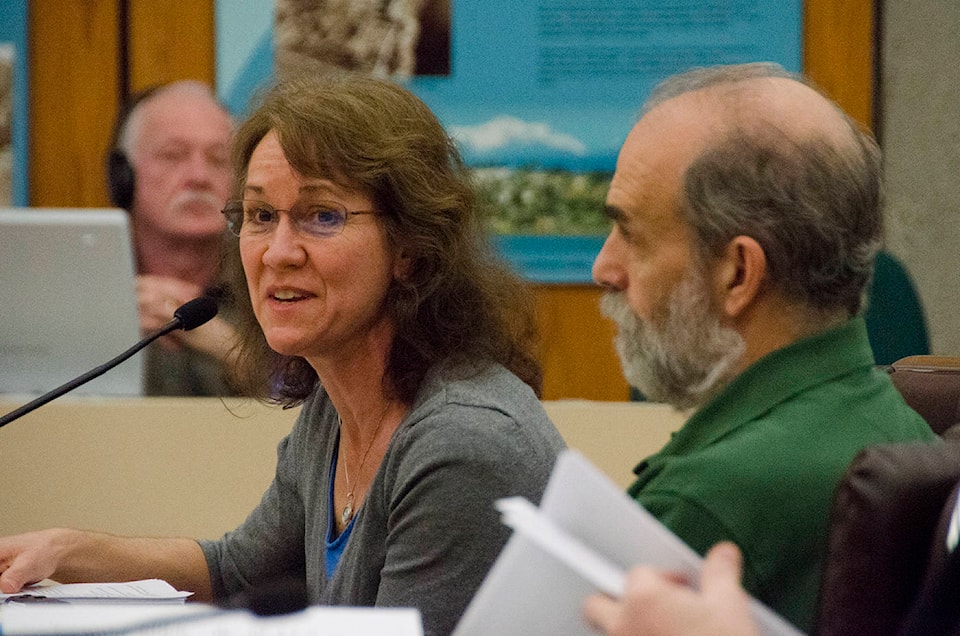Dedication has paid off for those in the community who have been pushing the city to create an urban forest management strategy for the past half-decade or so.
“It’s been in the budget since 2015, so we’ve had missed three opportunities,” says Sandra Milligan, president of Greenways Land Trust. Milligan came before council yet again at the start of last week’s financial planning deliberations to encourage them to take protection of the community’s trees seriously.
“Last year, it got moved up from 2022 to 2020, but didn’t get moved above the line, and if it’s not above the line, it’s basically just not something they’re going to do.”
This year, however, it did get moved above the line, which is good news for the community, Milligan says.
“I’m extremely relieved that council has finally seen the value of the plan,” she says. “The number one thing is that trees are an infrastructure asset. They need to be considered what they call municipal natural infrastructure assets, because they provide value just like a storm drain provides value.”
Every street tree, Milligan says, “provides $50 per year of value to our stormwater, air quality, energy savings, property value – these are things that trees participate in. So our street trees alone – that’s just the ones on city property – is $161,000 every single year. That’s what they provide back to the city.”
And that’s just the math on the ones the city owns, which is a small percentage of the total trees in the community. The majority are on private property.
While council did move the plan above the line this year, they left it to start in 2020, and they didn’t fund the entire $300,000 plan that year, either.
Coun. Michele Babchuk got the plan moved “above the line,” but proposed spreading it out over three years starting in 2020, which is what was adopted. While Milligan says implementing the $300,000 plan all at once would have been ideal – and would have paid huge dividends to the city for doing so – she’s glad it’s at least finally being put into action.
In fact, two of the major pillars of the plan – hiring a full-time arborist and creating a tree protection bylaw – moved all the way up to 2019 and got funded, which Milligan says will go a long way.
“That arborist will be a very important person in terms of moving forward with the implementation of the plan and any of its 53 recommendations,” she says. “And the tree bylaw is absolutely essential to start to curb the loss of trees. Whenever development is done, there needs to be someone looking around and asking, ‘which ones can we leave?’ Whenever a plot of land is developed, you’re going to lose trees and without a tree protection bylaw in place, you’ll lose a lot more than you need to.”
Considering Campbell River is one of very few communities on Vancouver Island without a tree protection bylaw already in place, it’s really about time, Milligan says.
“The majority of the Urban Forest Management Plan is really concentrated on street trees – because that’s something that the city can control directly – but most of our trees are on private property, and the infrastructure value of a tree is irrespective of whether its in someone’s yard or on a city street, so we need a mechanism to look after them,” Milligan says.
And for those who would say the city shouldn’t be spending this money, Milligan says, “it’s important to realize that for every dollar the city spends on trees, it gets back more than that dollar. To do what those trees do, were they to get taken down, you would have to be putting in way more infrastructure for stormwater and dealing with air quality problems and everything else, but trees provide that asset.
“We should be looking at what the trees are providing to the city and at least be paying them back.”
The development of the tree protection bylaw and the hiring of the full-time arborist will take place in 2019. Watch the Mirror for updates on the process.
miked@campbellrivermirror.com
Like us on Facebook and follow us on Twitter
